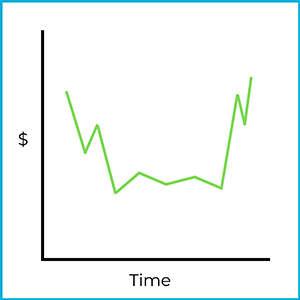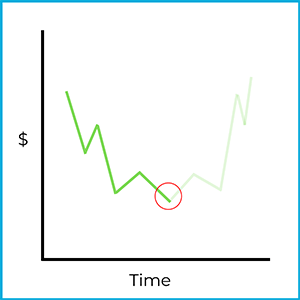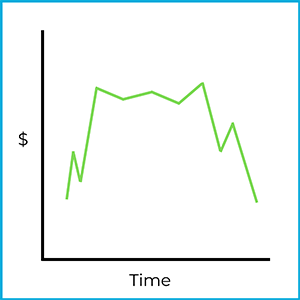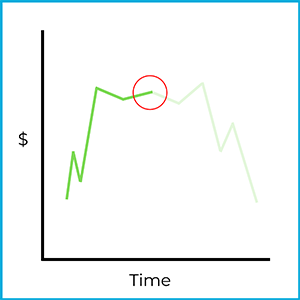Saucer formations are market trends that include a reversal. There are two types of saucer formations: saucer bottom formations and saucer top formations.
A saucer bottom formation looks something like this:

It kind of looks like a saucer (bowl), right? Technical analysts try to identify trends like this, which help them predict future market movements. While the stock price started and ended in the same general area, the stock is moving upwards after bottoming out. This is referred to as a reverse downward trend. The stock price was moving down, then reversed back upward.
Technical analysts are on the lookout for the beginning of a saucer formation. For example:

If a chartist identified this as the beginning stage of a saucer bottom formation, they could make a quick profit by going long (buying) the stock at this point:

Of course, the market is unpredictable and could move in a different direction. However, the market does trend in a predictable fashion from time to time. A confident technical analyst making an investment would be taking a risk, but the risk could pay off.
If you were to flip the previous stock charts upside down, you’d have a saucer top formation. It looks like this:

Kind of like an upside-down saucer (bowl), right? The market was trending upward, flattened out, then reversed back downward. This is an example of a reverse upward trend. Chartists keep an eye out for the initial stages of a saucer top formation.

If properly identified as the beginning of a saucer top formation, an investor could make a quick profit by going short (short selling) the stock at this point:

Again, the market is unpredictable and could move in a different direction. A confident technical analyst making an investment would be taking a big risk (selling short comes with unlimited risk), but it could pay off. If the trend continued downward beyond this chart, the investor would make a significant profit.
Sign up for free to take 3 quiz questions on this topic